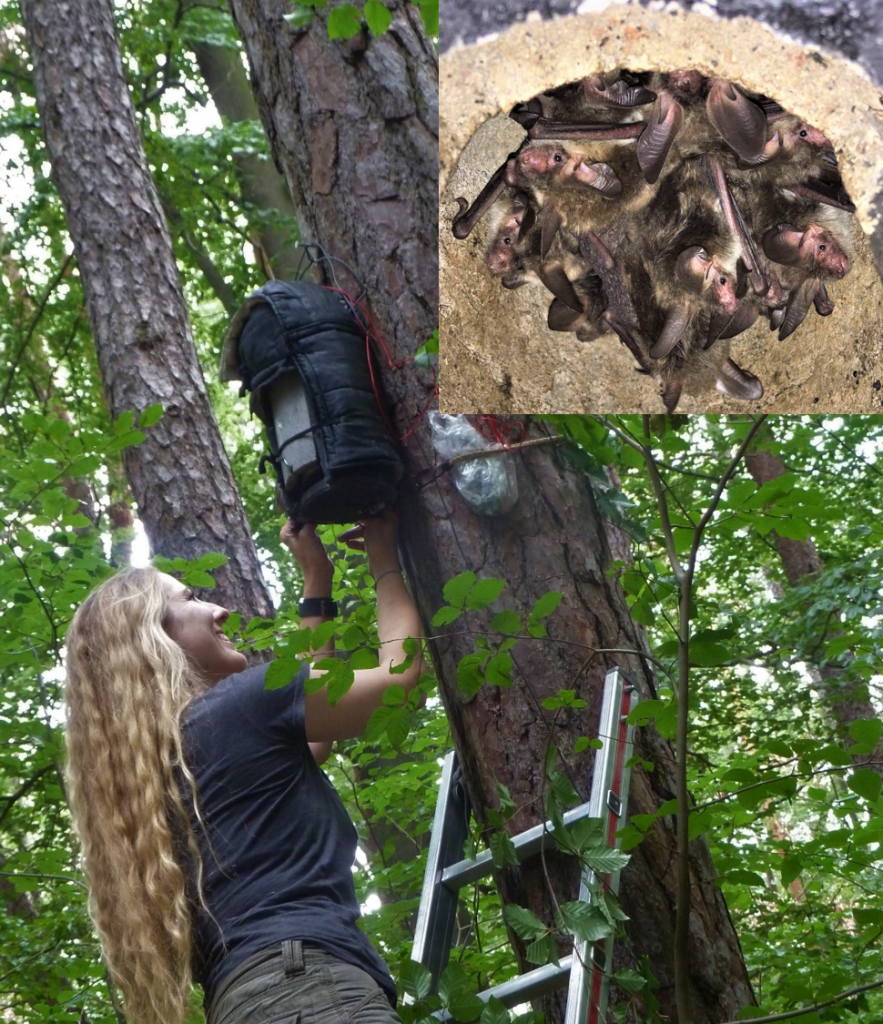This year’s long cold spring is raising concerns among many bat protectors about upcoming births. Malnutrition in female bats is known to cause abortion to avoid pregnancy and raising young under poor nutritional conditions. Long dry periods and the increasingly warm summers also have an influence on the birth rate and the probability of survival of the animals.
A DFG-funded long-term study by the Applied Zoology and Nature Conservation Group of the University of Greifswaldshows an effect of climate change: Female Bechstein bats born in warm summers (Myotis bechsteinii) become larger, but die earlier. For the study, animals from four free-living colonies in Franconia (Bavaria, Germany) were individually marked with RFID transponders. Over a period of 24 years, data on body size (forearm length) and survival (mark-recapture analyses using automated RFID montitoring) were collected. These were set in relation to the summer temperatures in the respective year of birth of the animals. It was found that higher temperatures during the rearing phase in June and July lead to larger body sizes in females. At the same time, larger females had increased mortality throughout their lives. “The study area in Lower Franconia is particularly suitable for research into the consequences of climate change. In the area, summer temperatures are rising above average in a global and Germany-wide comparison. The evaluation of our long-term data shows that adult females born in warm summers have a higher mortality rate. This is a potential threat to the survival of the endangered species. Over the last 24 years, the population development of the observed bat colonies has not exhibited a negative trend. However, it cannot be ruled out that with more frequent warm summers, the negative influence of large body size on individual mortality has a stronger effect on the population level,” reports Carolin Mundinger, lead author of the study.
Using modern modelling, the researchers first determined the time window in which the growth of the young animals reacts most sensitively to weather influences and identified the weather parameters that play the greatest role. It was found that the temperature of the months of April and May significantly determines the date of birth of the Bechstein bats. The warmer it is in spring, the earlier the births take place. Furthermore, it has been found that juveniles born in warm summers become larger than in colder summers. The date of birth had no influence on the size of the young animals but the aspect that less energy is spent on thermoregulation at higher temperatures. The energy saved is available for juvenile growth. “In addition to the weather, colony size also plays a decisive role. The more females live together in a colony, the larger the offspring becomes. It is probably crucial that females warm each other and thus mitigate cold weather conditions that would delay the development of the young animals,” adds Prof. Dr. Gerald Kerth from Zoological Institute and Museum at the University of Greifswald.
.

Origial study:
Mundinger C, Scheuerlein A, Kerth G (2021): Long-term study shows that increasing body size in response to warmer summers is associated with a higher mortality risk in a long-lived bat species. Proceedings of the Royal Society B, 288: 20210508 https://doi.org/10.1098/rspb.2021.0508
